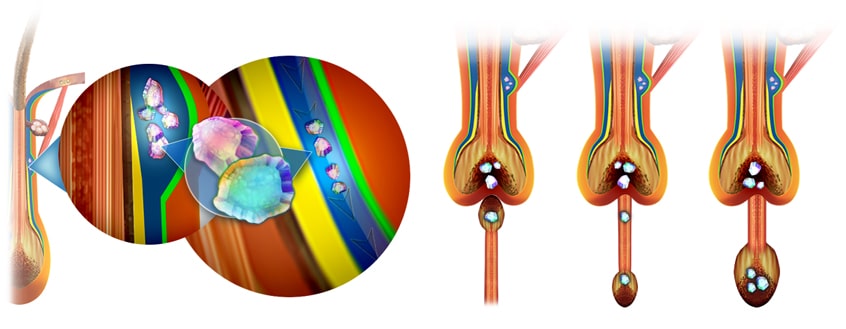One key to successful hair restoration is Platelet-Rich Plasma (PRP), which contains growth factors, fibrinogens and cytokines, all of which are involved in the regenerative process.
A small amount of blood is drawn and put in a centrifuge to obtain PRP, which typically has a concentration of platelets five times that of whole blood.
Platelets play an important role in healing by creating new blood vessels, collagen and dermal cells. Platelets have three large storage compartments: alpha granules, dense granules and lysosomes, all of which contain growth factors. Activating the platelets with calcium chloride ruptures the granules and releases growth factors at the injected site. Most of the platelet growth factors are growth inducing, and a few are growth inhibiting.
Growth-inducing factors:
- Basic fibroblast growth factor (bFGF)
- Platelet-derived growth factor (PDGF)
- Hepatocyte Growth Factor (HGF)
- Macrophage Stimulating Protein (MSP)
- Vascular Endothelial Growth Factor (VEGF)
- Keratinocyte growth factor (KGF)
- Insulin-like growth factor I (IGF-I)
- Substance P
Growth-inhibiting factors:
- Transforming growth factor beta (TGF- 1)
- Fibroblast growth factor type 5 (FGF5)
- Epidermal growth factor (EGF)
Cytokines are small cell-signaling proteins in white blood cells and also play an important role in repair. The interleukins IL-1, IL-3, IL-6, and IL-8 are the most important cytokines involved in hair growth.
Fibrinogen from the plasma helps form a sort of scaffolding that promotes healing when it interacts with endothelial cells, smooth muscle cells, fibroblasts, leukocytes and keratinocytes. These cells and proteins work together to help form new blood, collagen and dermis tissue.
PRP injected at the level of the dermal papilla in hair follicles close to the area of hair thinning can improve blood supply and rejuvenate the scalp, to help thin, weaker hair become stronger, helping to reduce hair loss.

